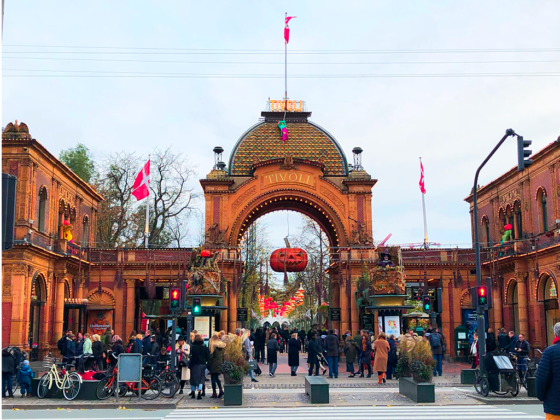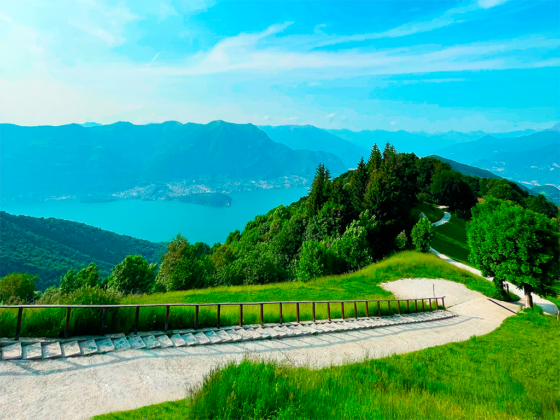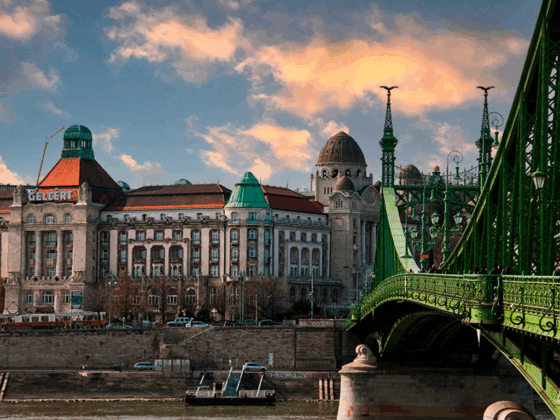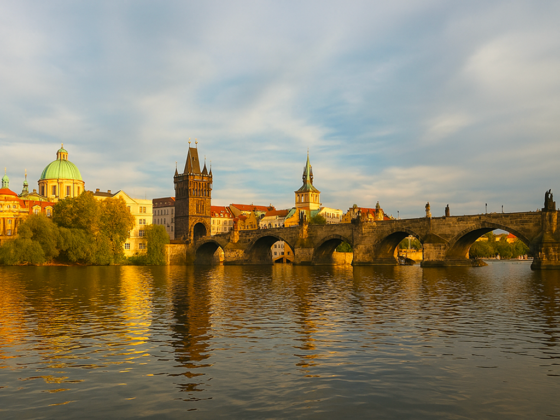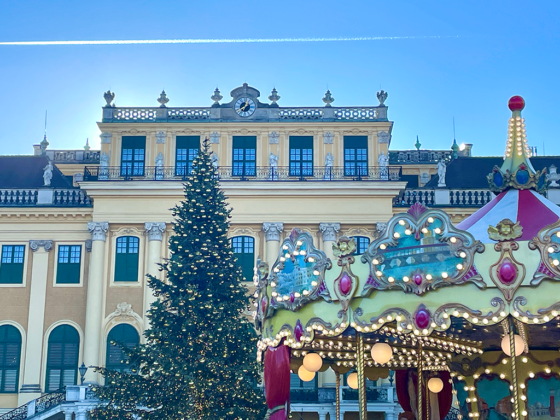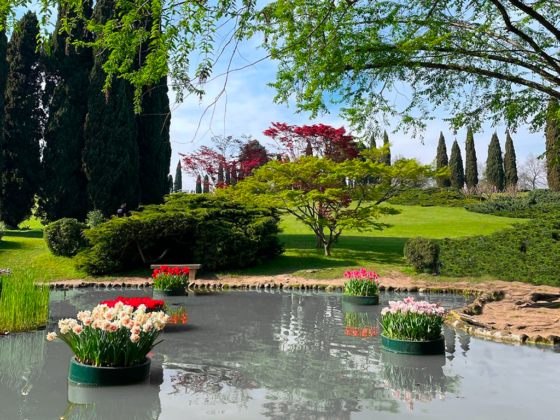Venice, the city of canals and waterways, seems to have come straight out of a painting. With its gondolas gliding silently along the canals, its historic palaces reflected in the water and its narrow, winding streets, it is a place that seems suspended in time.
As soon as I arrived, I was immediately struck by the unique atmosphere of this city. The sound of flowing water, the smell of the sea mixed with the coffee from the many cafés… everything contributes to creating a magical and unforgettable atmosphere.
But Venice is not only beauty. It is a city rich in history and culture, where every corner tells a story. From its famous bridges, such as the Rialto Bridge and the Bridge of Sighs, to its splendid palaces, such as the Doge’s Palace, Venice is a veritable open-air museum.
In the Venetian lagoon, its fascinating islands, Murano and Burano, stand out and are definitely worth a visit. These pearls of Veneto are famous for their unique beauty, rich history and craft traditions. Prepare to immerse yourself in a world of glittering canals, colourful palaces and hand-blown glass.
This two-day itinerary passes through some of the most iconic places, offering a taste of its cultural and historical richness and timeless beauty. Whether you are a history buff, art lover or simply in search of beauty, the Venice lagoon has something to offer everyone.
Here are the must-see stops on our itinerary.
Map
Day 1: Venice – Canals, Palaces, Historical Squares and Breathtaking Views
The first day is dedicated to the main attractions of Venice.
We begin our journey from the Rialto Bridge, the oldest of the four bridges spanning the Grand Canal. Built in the 16th century, it is a masterpiece of architecture with its stone arches, is 48 metres long and consists of a single wide arch of 28 metres. Its name means ‘High Bank’ and it houses 24 small shops on both sides. In the centre of the bridge is a portico with two arches. From here, you can enjoy a spectacular view of the Grand Canal, with its gondolas and historic palaces.
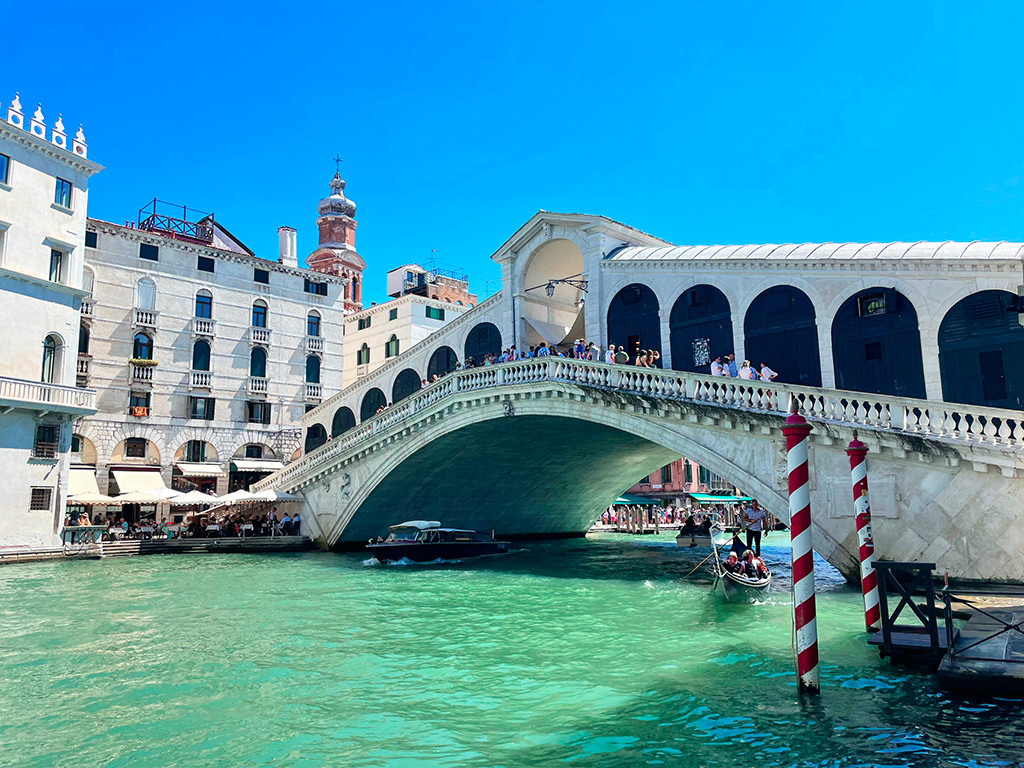
A curiosity about the Rialto Bridge concerns two capitals depicting a man with a clawed protuberance between his legs and a woman crouching in flames. At the time of its construction, no one believed that such an imposing and expensive bridge could be built. Among the sceptics, a man would say that the bridge would be finished when his privates would put their nails in, and a woman would promise to have her belly burnt if the bridge was completed. The two sculptures mock all the sceptics who did not believe in the project.
Tips for Trips: you can also reach the bridge by waterbus thanks to the public water transport offered by the ACTV service, either by purchasing a ticket for a single journey at €9.50 (valid for 75 minutes) or by selecting a transport card valid for 24, 48 or 72 hours (at €25, €35, €45), with which you can move around Venice and its islands without restriction during the chosen period.
From here, we lose ourselves in the centre and its thousand alleyways and arrive at St Mark’s Square, the beating heart of Venice. At one end stands St Mark’s Basilica, a masterpiece of Byzantine architecture in which history and faith, East and West, art and wealth are intertwined. Its beauty is the result of architectural and artistic contaminations.
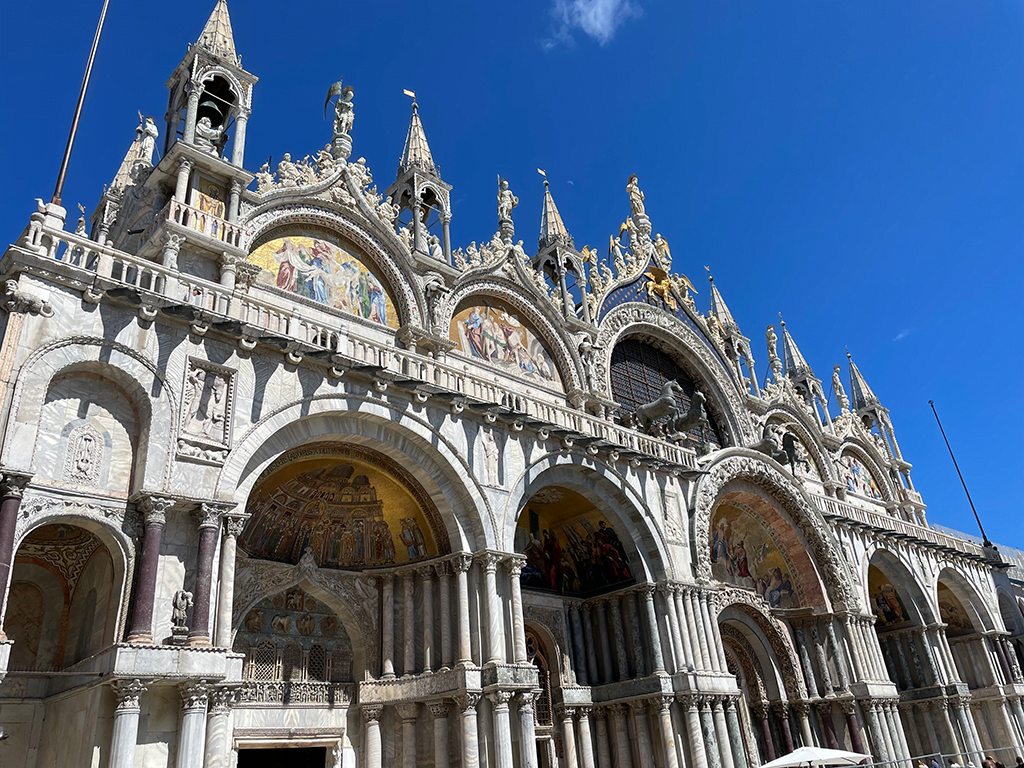
Opposite is the Campanile di San Marco, which at 98.5 metres high is the tallest building in the city. At the top are five bells that were used with different functions during the Republic: the ‘Marangona’, the largest, which rang at the beginning and end of the working day; the ‘Malefico’, the smallest, which announced death sentences; the ‘Nona’, which rang at nine o’clock; the ‘Trottiera’, which was used to gather the members of the Maggior Consiglio in the Council Chamber; the ‘Mezza terza’, which announced a session of the Senate. From its summit one could enjoy one of the most spectacular views of the city and the lagoon.
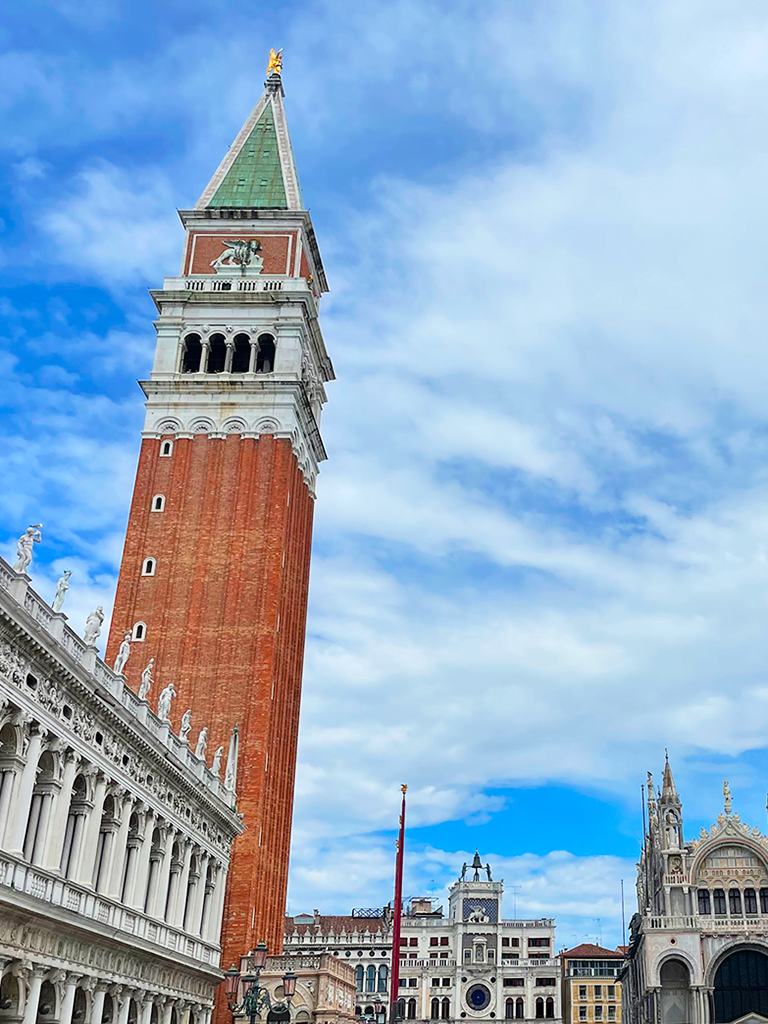
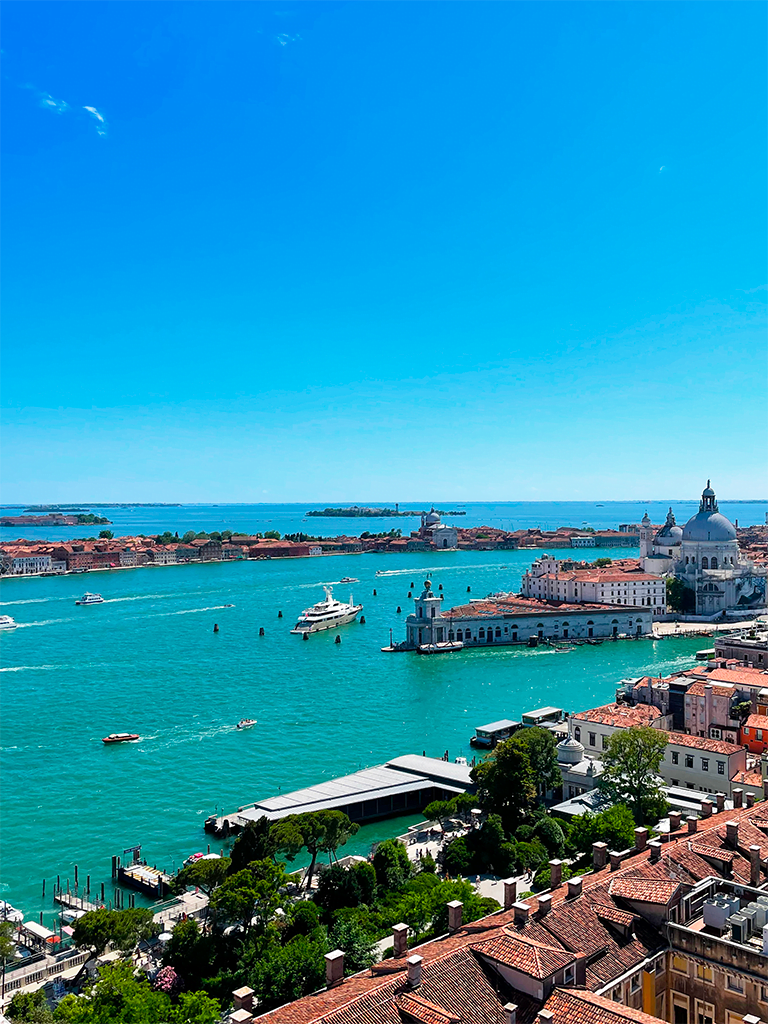
Next to the square is the Doge’s Palace, a symbol of the power and wealth of the Venetian Republic. We cross the famous Bridge of Sighs, so called because it is said that prisoners sighed at their last sight of Venice before being imprisoned. The bridge connects the Doge’s Palace to the Palazzo delle Prigioni Nove (Palace of Prisons Nine ), which you can visit to get an insight into the life of prisoners in Venetian times.
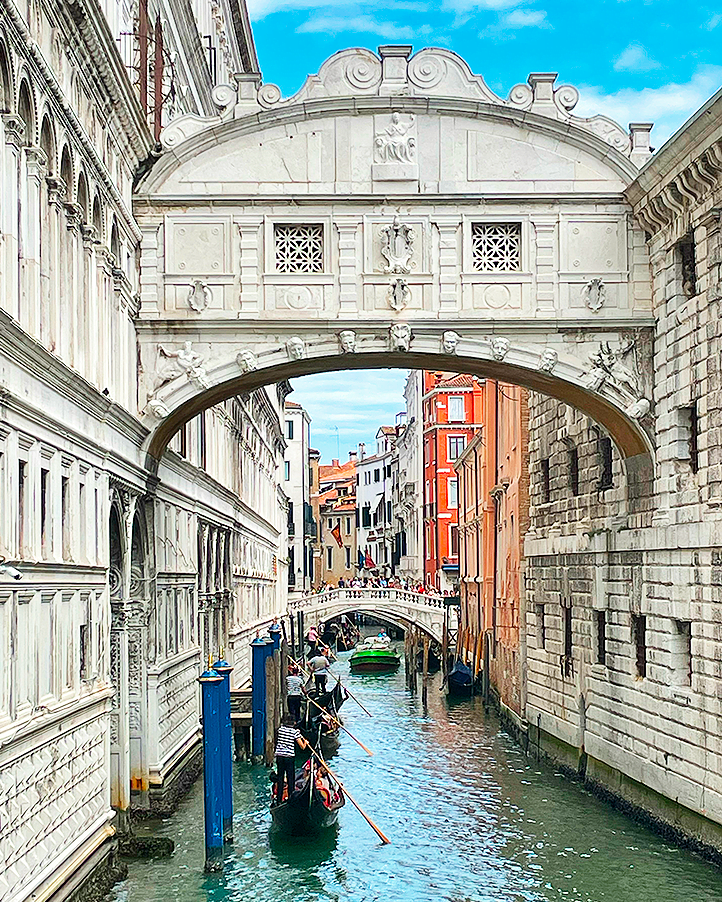
We stroll along the Riva degli Schiavoni, a lively and crowded waterfront that offers a spectacular view of the lagoon. As true tourists, we do not miss a gondola ride through the city’s canals. The experience is very impressive, I feel lulled by the movement of the water up and down the canals and the view of the city from here conveys calm and peace.
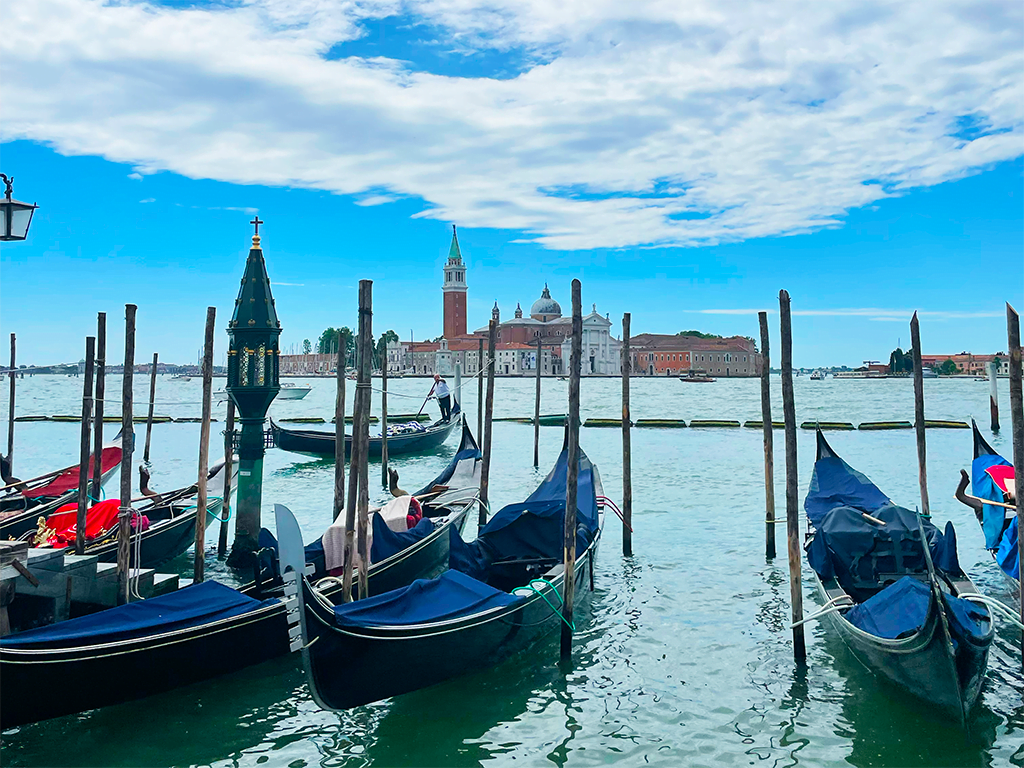
For book lovers, a visit to the Acqua Alta Bookshop, one of the most unusual bookshops in the world, is a must. Books are stored in gondolas, boats and bathtubs to protect them from flooding. In this place, old books that are too ruined or that nobody buys any more have a new life by becoming furniture components or cover entire walls giving colour all around. Don’t miss the staircase of books in the courtyard, from which you can enjoy a unique view of the canals.
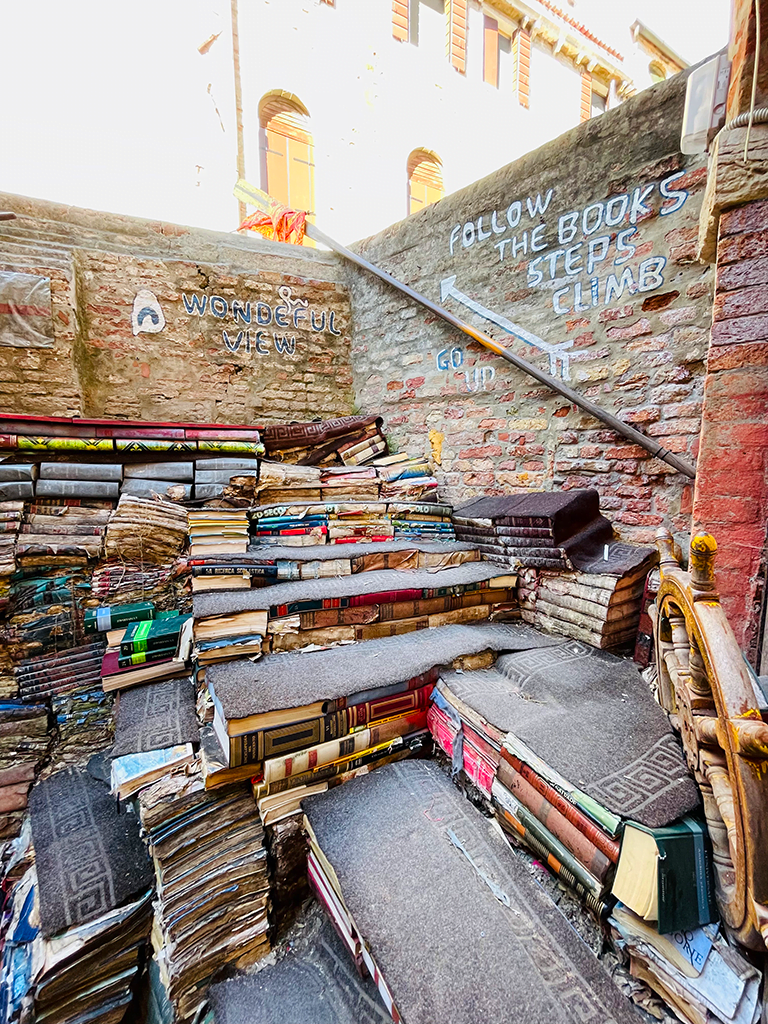
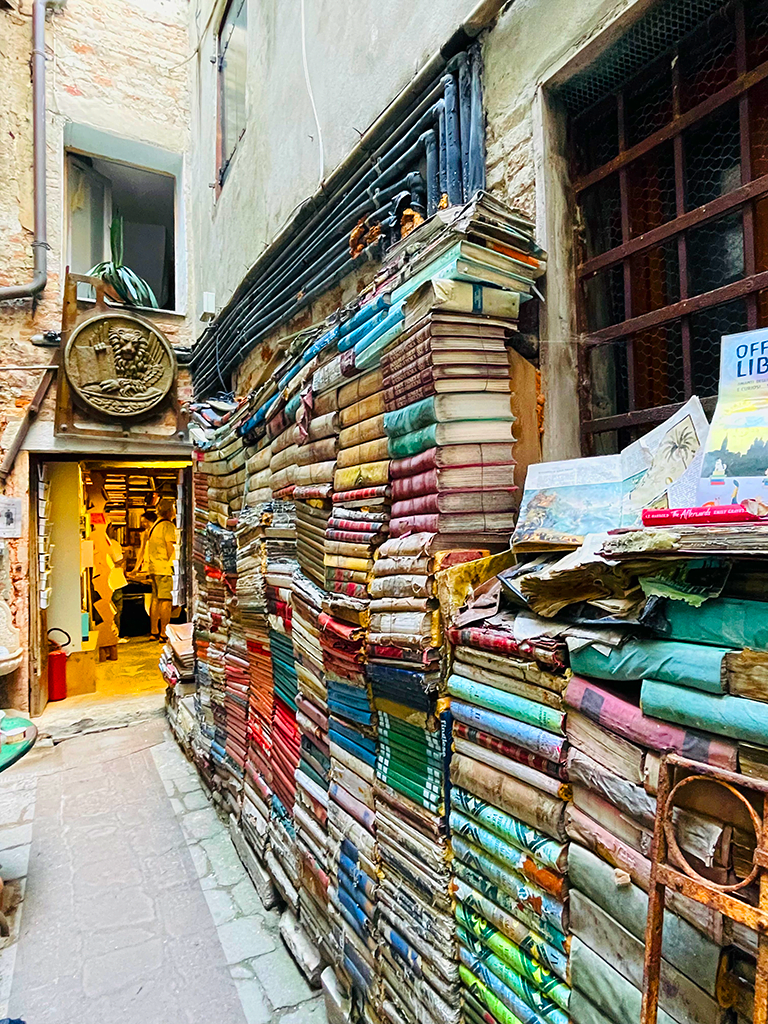
In the sestiere of San Marco, near Campo Manin, in a rather hidden corner of Venice is the Palazzo Contarini del Bovolo. The special feature of the palace is its 26-metre-high staircase designed by architect Giovanni Candi, which gives access to the adjoining loggias on all four floors of the building. This spiral staircase, with its combination of Gothic, Renaissance and Byzantine styles, offers a crazy panoramic view of the city.
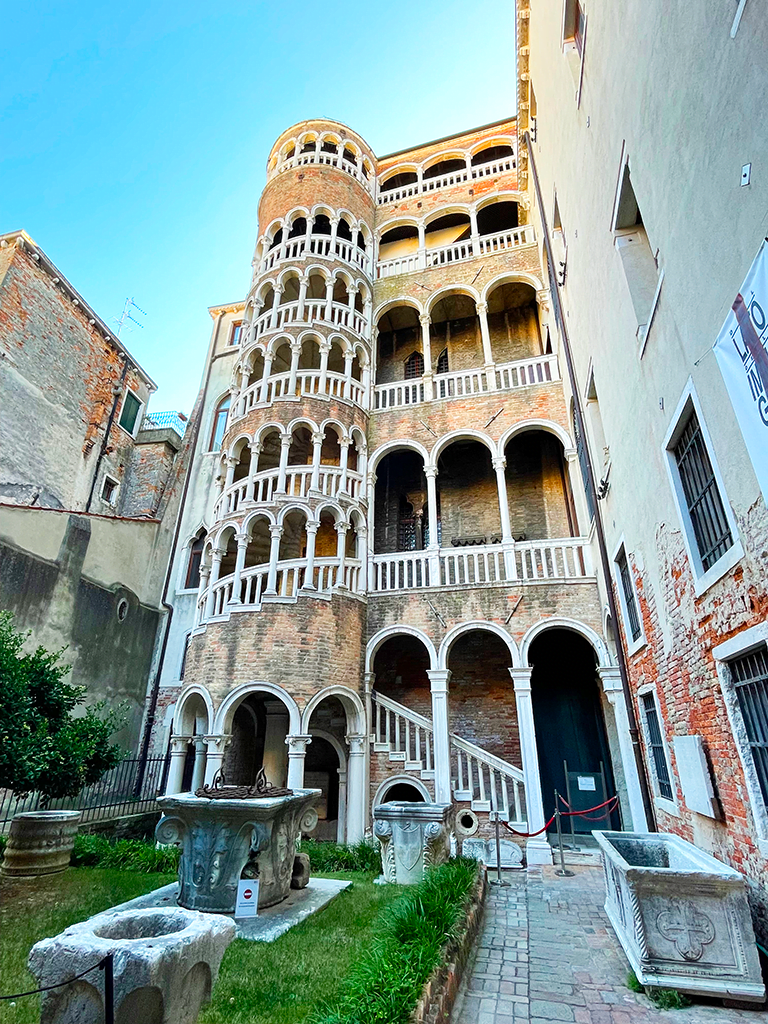
We cross the Accademia Bridge, the southernmost of the four bridges spanning the Grand Canal. From its steps you can enjoy one of the most romantic and scenic views of the entire Grand Canal. Its history is highly symbolic: it was built in 1933, as a temporary bridge, to replace an earlier iron bridge built by the Austrians in 1854 to shorten the passage from St Mark’s Square to the newly built Santa Lucia railway station. Over seventy years later, the beautiful temporary bridge is still there. As they say ‘there is nothing more permanent than temporary’.
We push on to Punta della Dogana, a thin triangular point dividing the Grand Canal and the Giudecca Canal that was once Venice’s customs house, which is almost sunset. We sit and enjoy a 360-degree view of the lagoon. After a very hot and very full day, this view refreshes us and fills our eyes with beauty.

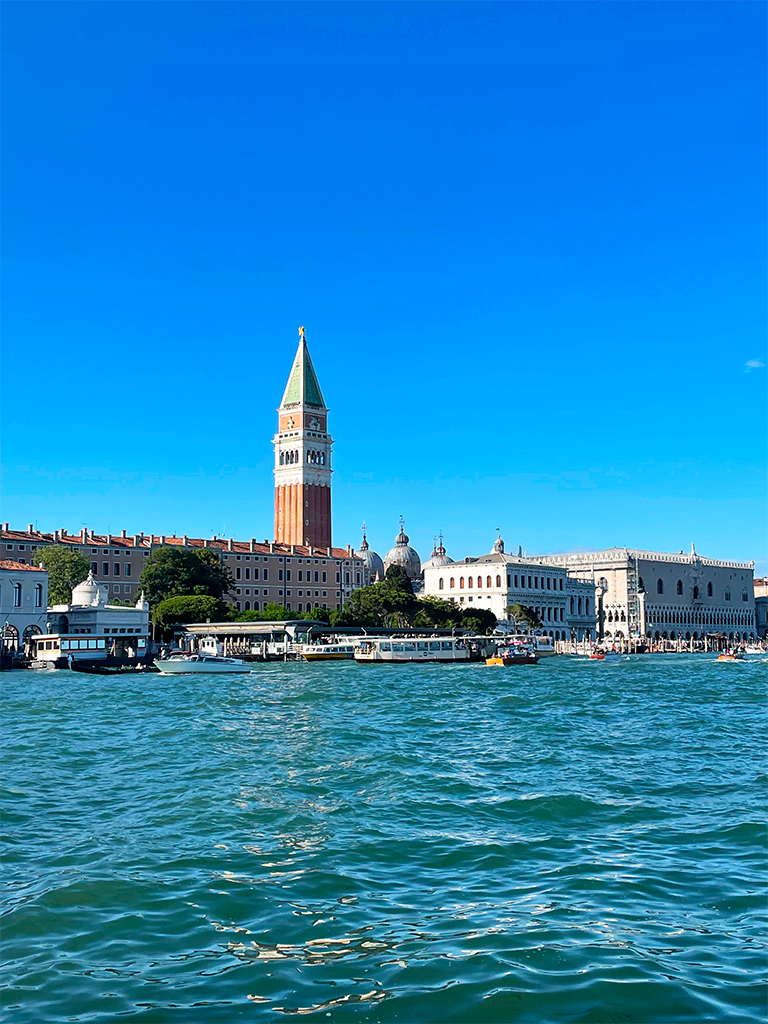
We end our day at Campo Margherita, rich in bars and bustling with life, ideal for enjoying the Venetian ritual of spritz and cicchetti, an essential part of the authentic aperitif. Venetian cicchetti are traditional appetisers, small bites made of slices of bread or polenta stuffed with fish, cured meats and cheeses.
Day 2: Murano and Burano – The pearls of the lagoon
On the second day, we take the vaporetto to the island of Murano, famous for its centuries-old tradition of glassmaking. It is made up of five small islands divided by a central canal called the ‘Canal Grande’, just like the one in Venice, and is characterised by colourful houses, small canals of water and many small bridges to move from one shore to the other. There are many workshops on the island where you can admire the original technique used in the glass-blowing process, handed down by entire generations of craftsmen.
Tips for trips: You can reach Murano by public water transport offered by the ACTV service that connects the historic centre of Venice with all the other islands in the lagoon by waterbuses and boats. From Venice to Murano there are 4 lines (no. 3, 13, 4.1 and 4.2).
We get off the vaporetto at the first stop, Colonna, and walk along the Fondamenta dei Vetrai, the street that runs along one side of the Grand Canal and into the heart of the island. The street is full of numerous shops where you can buy glass souvenirs of all shapes and types, all very colourful!
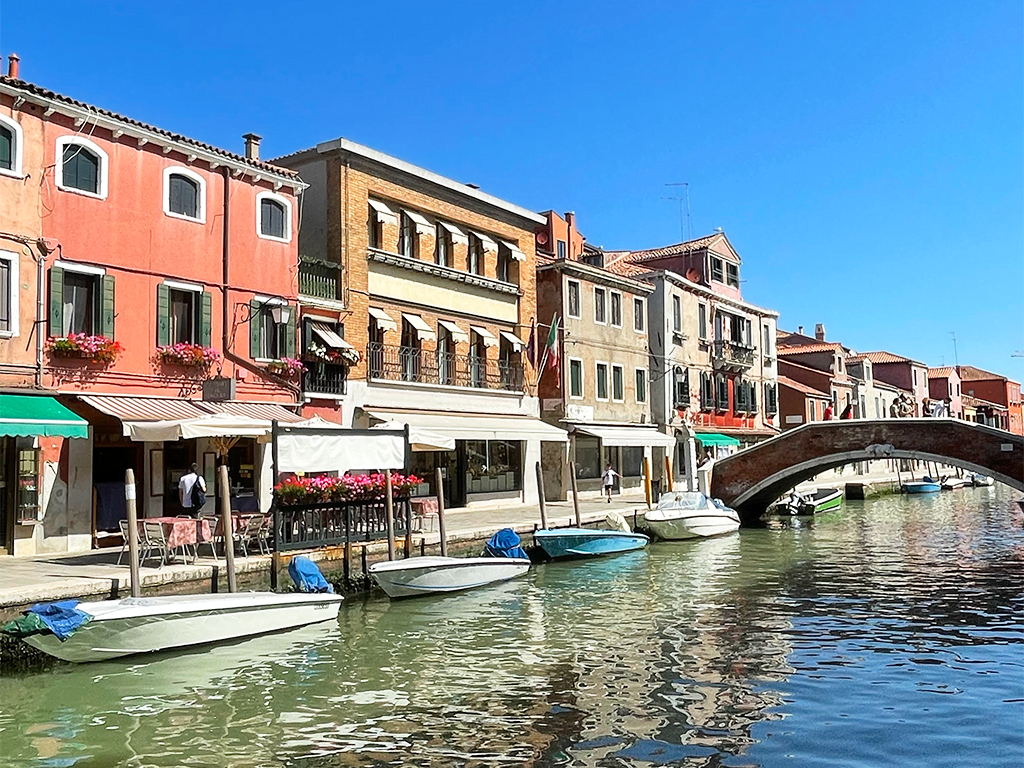
At the end of the Fondamenta dei Vetrai, just before the Longo bridge, on the right is the Church of San Pietro Martire. Crossing to the opposite bank and after walking along Riva Longa you will find Palazzo Giustinian, which houses the Glass Museum. This houses 700 years of glass history, with marvellous Venetian glass produced from the 14th century to the present day. We pass the Duomo di Murano, dedicated to Santi Maria e Donato, an example of Venetian-Byzantine art.
We continue with the Glass Cathedral of St Clare, a beautiful glass-making furnace. This structure is one of the oldest on the island. It was built before the Doge’s decree in 1291 obliged all master glassmakers to move their furnaces to Murano. Originally inhabited by a group of Augustinian monks, the Cathedral was deconsecrated, and after restoration, opened to the public. We arrive at the Murano Lighthouse, which stands out against the sky in spite of the low houses that surround it. The lighthouse we see today was built in 1934, has a typical cylindrical shape and is made entirely of Istrian stone, hence its snow-white colour.
From here we take the boat to Burano, the second stop of our day. The island of Burano is a small archipelago of four islets at the northern end of the Venetian lagoon, famous for its lace-making and for being the most colourful town in Italy. It is characterised by multicoloured houses and balconies of flowers reflected in the green waters of the canals. According to a legend, it was the fishermen who painted their houses in order to recognise them from afar during the long periods of absence due to fishing.
Tips for trips: From Venice you can reach Burano by public water transport offered by the ACTV service. You have to go to Fondamente Nove from where ACTV waterbuses depart with regular runs, about every 30 minutes, stopping at the Murano Lighthouse and reaching first Mazzorbo and then Burano.
Once off the vaporetto we find ourselves in a large meadow where a sculpture by artist Remigio Barbaro ‘Waiting for Peace’ stands out. Continuing on we enter the heart of the island, we are enraptured by the artisans’ shops selling lace and souvenirs of all kinds. We arrive at the Fondamenta di Cavanella, the most picturesque street in Burano where the famous Rainbow Houses stand. These lively houses are an icon of the island and offer an incredible spectacle. I am fascinated by the thousands of colours of the houses and the multicoloured balconies of flowers reflected in the green waters of the canals.
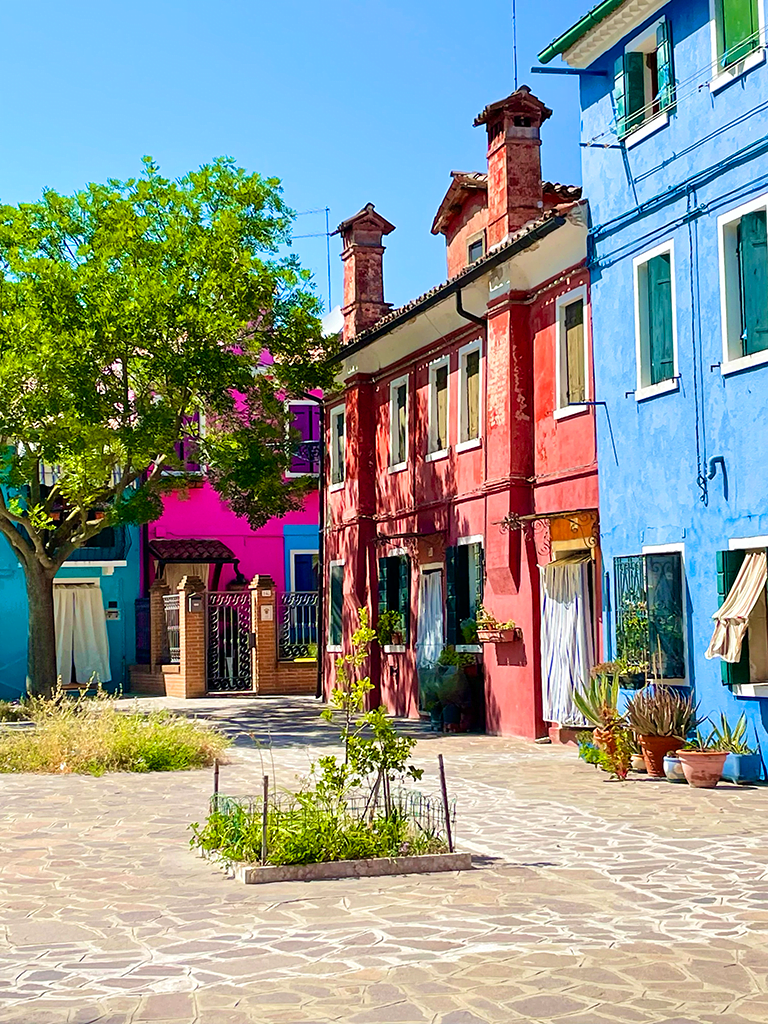
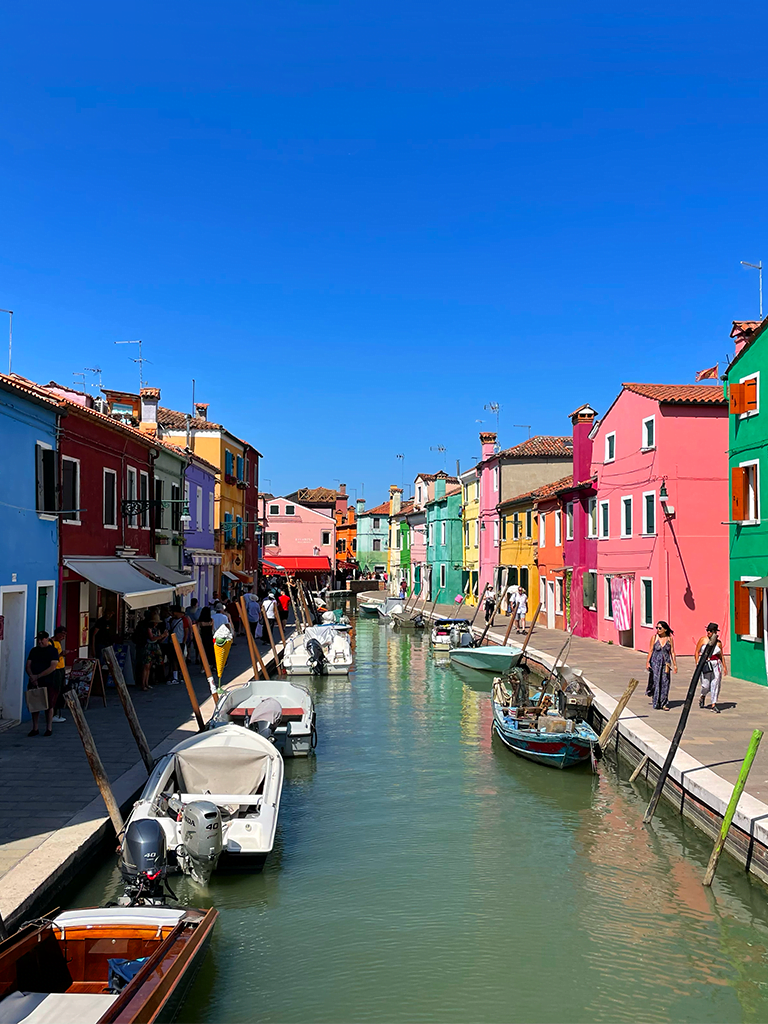
We cross Burano’s‘Tre Ponti‘, which are not three separate physical bridges but the name of an area of the island where three canals intersect, creating a characteristic panoramic view. We walk along Rio Giudecca until we come to Piazza Baldassarre Galuppi, the only one on the island. In the same square is the Palazzo del Podestà – seat of the town hall – the Museo del Merletto (Lace Museum ) and the Church of San Martino Vescovo – a small architectural masterpiece that preserves some important works inside – . At the back of the church is the Storto di Burano Bell Tower – the best position to admire it is the Terranova Bridge or the Riva della Giudecca – built in the 17th century, which has a square shape and Renaissance and neoclassical architectural features. In the centre of the square is a well, dating back to the 16th century, made entirely of Istrian stone with a fountain from which drinking water flows.
We walk down the street full of shops and boutiques, restaurants and cafés where we take a break and treat ourselves to a fresh citronette by the canal, immersed in the lively atmosphere of the island.
We then retrace our steps and take the boat back to Venice. From here we take the car and return.
I leave Venice totally enamoured, struck by the view of the city emerging from the waters of the lagoon that is simply breathtaking, fascinated by its intricate labyrinth of streets and canals, bewitched by the feeling of silently navigating through the canals and observing Venice from a different, magical and unforgettable perspective.
These sensations are just a taste of what one can experience when seeing Venice for the first time. Each person can have different and unique experiences; the atmosphere, architecture and history of this fascinating city leave an indelible imprint in the memory of those who visit it.
Last modified: 14 June 2025
